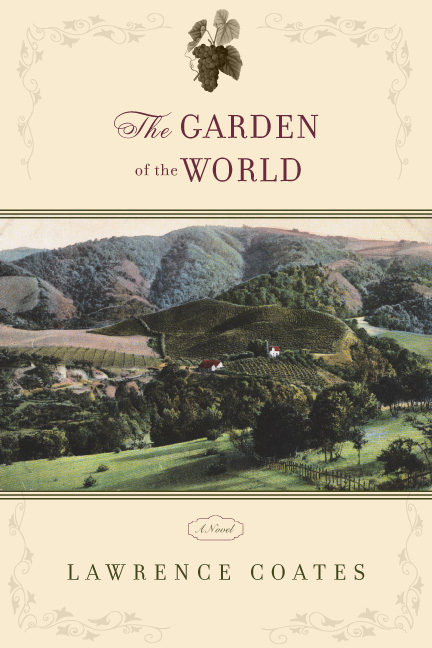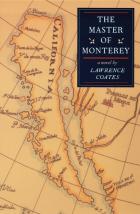I finally published a book group guide for The Garden of the World, only four years after it was published.

I finally published a book group guide for The Garden of the World, only four years after it was published.

I just published a book group guide for my novella Camp Olvido.
A nice review of The Goodbye House from Mid-American Review, 36.2.
“Each character of The Goodbye House is rendered with equal care, with intricate attention to the motivations, foibles, and ensuing actions. While the final events of the story are not expected, they do make sense, given the carefully blended behavior. Our affection for the family has grown, and we are cheering at last for their optimism as much as we’d ever cheer for our own.”
I’ll be on a panel entitled “The Art of Research: How Writers Use Libraries to Develop Their Skill, Craft, & Careers” at the Ohio Library Council’s 2016 Convention and Expo. The panel takes place on Wednesday, Sept 28, at 4:15 pm, and I’ll be appearing with Amy Gustine and Andrew Welsh-Huggins.
I was very honored to have The Master of Monterey chosen by Better World Books as one of their three summer reads from California in their 2016 Summer Reading Challenge. The Master of Monterey was published more than ten years ago, so any attention it gets now is wonderful. I have no idea who at Better World Books chose it, but I am very grateful… I have this notion that anyone who reads this book, in particular, will remember it, and it seems someone did. 
A “child stalked by death” and an incidental act of kindness in a world without it drives the tragedy in Lawrence Coates’s Camp Olvido … Excellently constructed…”
Richard Henry, Rain Taxi Review
Small Press Distribution now has a ‘peek inside’ feature for Camp Olvido. So if you’re interested in reading the first ten pages, enjoy!
I recently published an essay about writing, my time in Mexico as a freelance journalist, and other things, on David Abrams’ site The Quivering Pen.
I have switched my blog to my website. If you want to continue to follow this, you should follow this blog at: http://lawrencecoates.com/the-techniques-blog/
But I wanted to post this here as well, so that my complete series of posts on Trauma and the Achronological Novel is available here, as well as at my website. After this, I’ll only be posting updates on my website.
This is my fifth and last post on Trauma and the Achronlogical Novel.
To sum up, I’ve looked at three novels that have a trauma at the center: Beloved, The God of Small Things, and The Yellow Birds.
All of them have similarities in the way the stories are told. They are told in fragments, narrative passages of relatively short length, and the fragments are not presented chronologically. Rather, they skip around, from past to present to future, so that readers often know more about the outcome of events than the characters in scene.
I argued that the achronological presentation has real advantages. Among other things, it allows for dramatic irony. The soldiers training to go to Iraq, for instance, are ignorant that one of them will die, whereas readers know that their actions take place under a sign of doom. Thus, readers understand that the promise that one soldier makes to the mother of another soldier that he’ll bring her son home safely is fated to be broken.
I also argued that, for a trauma to be “novel-worthy,” it is best if the trauma somehow brings into play larger social and historical issues. In Beloved, the trauma stems from America’s history of chattel slavery; in The God of Small Things, the trauma stems both from India’s history as a British colony and from India’s caste system; in The Yellow Birds, the trauma stems from America’s invasion of Iraq.
My last point was that, despite the fragmentary and achronological presentation of events, a comprehensible plot will eventually emerge. In the end, when readers have completed the book, a cause and effect chain will be understood. In Beloved, for instance, readers will understand how Schoolteacher’s arrival caused the horror of slavery to become more manifest, which then caused Sethe and the others to try to escape, which then caused Schoolteacher to follow with slave catchers, which then caused Sethe to kill her child rather than see it returned to slavery.
E. M. Forster, in Aspects of the Novel, talks about the readers at the end of a book being like spectators sitting on top of a tall hill. Finally, they can look back at all that went before, and it will make sense. Forster uses a phrase I’d like to emphasize – if the plot is a fine one, he says, the result will be “not of clues or chains, but of something aesthetically compact, something which might have been shown by the novelist straight away, only if he had shown it straight away it would never have become so beautiful.”
“Aesthetically compact”… that’s what I want to emphasize. So a novel of fragments, told out of time, becomes at the end aesthetically compact, a whole, a luminous work of art.
And yet… as I said earlier, echoing both Freud and Carruth, the reason a traumatic event is traumatic is that it cannot be contained in a normal, sense-making story. The trauma resists comprehension. That’s what defines it as a trauma. It is unfinished, and so it continues to intrude in the present life of those who experienced it. The traumatic event cannot be comprehended, but it also cannot be forgotten.
So these writers, wisely, do not allow the conventions of narrative closure to be more powerful than their stories. The novels end, cause and effect chains are evident, an aesthetic whole is created, but they don’t really put the trauma to rest. Recall the end of Beloved, especially. The community has come to the house of Sethe, and in an act that might almost seem akin to exorcism, drives out the resurrected ghost of the murdered child.
But although the ghost is gone, and although they all forget Beloved, Morrison writes that occasionally skirts rustle when they wake, and that sometimes knuckles brush across a sleeping cheek, and that other times photographs shift “and something more familiar than the dear face itself moves there.”
The ending makes it clear that the trauma persists within the community, despite the will to forget. Morrison’s beautifully ambiguous phrase makes this clear: “It was not a story to pass on.” Nobody wants to pass on the story – in other words nobody should remember it. Or else, nobody should take a pass on this story – in other words, nobody should avoid hearing this story and knowing what had taken place.
A novel centered around a traumatic event lends itself very well to a fragmentary, achronological narrative rendering. The jumps back and forth in time recall the way a traumatic event is unfinished and intrudes in present life. And if the novel’s ending makes what went before it make sense, then the plot is, in Forster’s words, a fine one. Yet there may be something that yet escapes the sense-making function of plot, and it may be just that something that makes a novel like Beloved both strange and great.
Thanks to all who have stopped by this blog since I began it some months ago. It will now be housed at my website, http://lawrencecoates.com. You can find it there under the tab “The Techniques Blog,” and you will still be able to search for past posts under such categories as plot, short-shorts, book biz, etc.
I hope you’ll visit. The blog will continue to have posts about the techniques of literary fiction and the business of publishing.